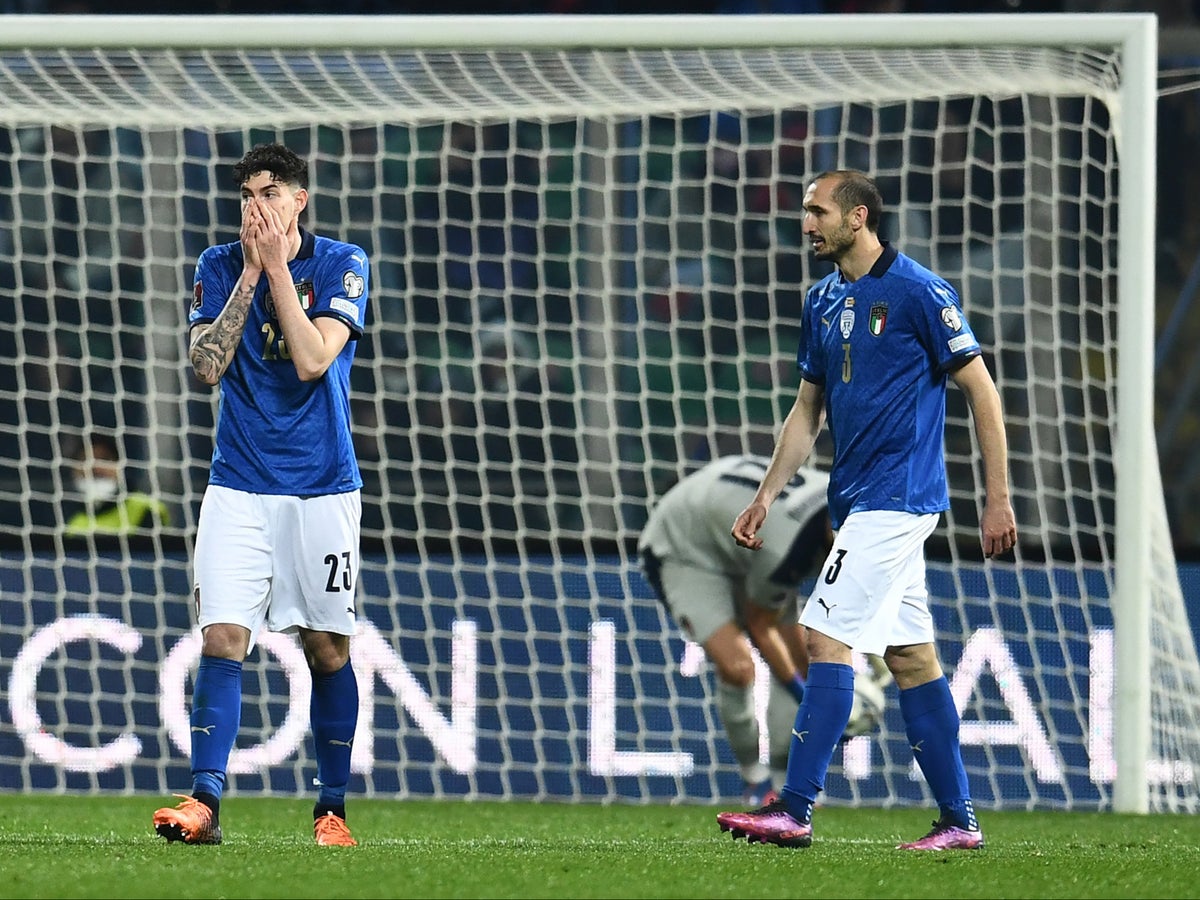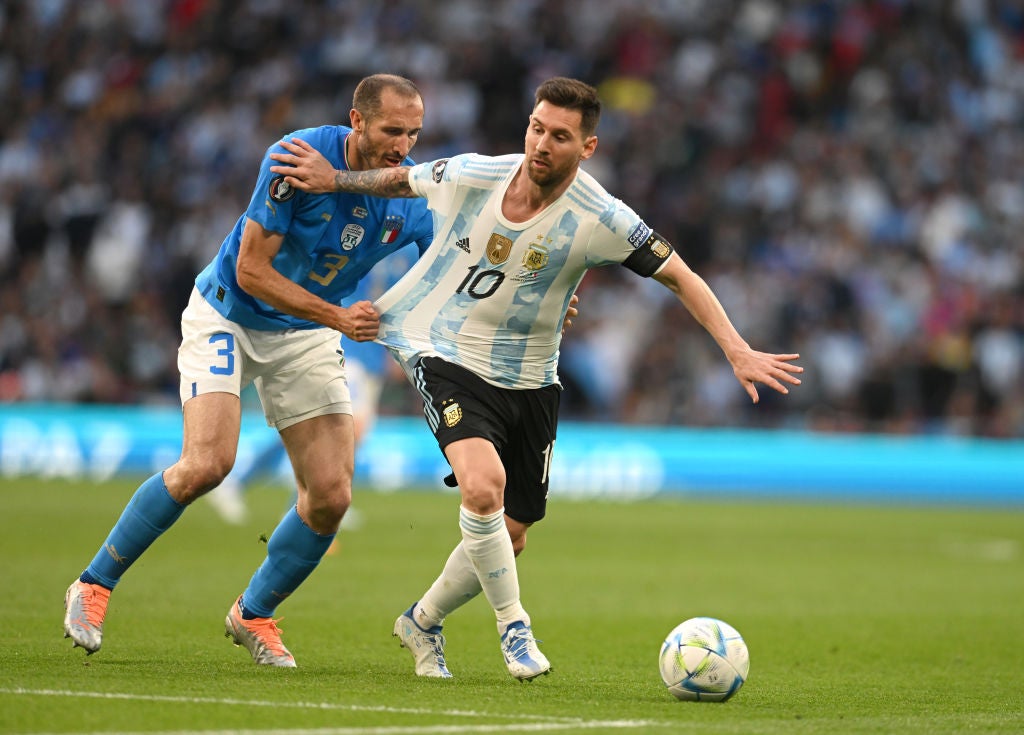
Rewind to March and Roberto Mancini was sounding bullish. “The objective is not to go to the World Cup, but to win it,” declared the Euro 2020 winner. Then along came North Macedonia. A play-off semi-final when Italy had 32 shots, failed to score and conceded in injury time meant that if Mancini is to head to the World Cup, it will only be as an observer.
For the first time in their storied history, Italy will sit out consecutive World Cups. For the last, too, perhaps. If their recent underachievement reflects a freakish game against North Macedonia, Jorginho’s crucial missed penalties in a group they were controlling and, four years earlier, Giampiero Ventura’s disastrous reign, there is a bigger picture than just Italy’s capacity to veer between triumph and disaster.
The 2026 World Cup will feature 48 teams. If expansion will bring far greater representation for the African and Asian contingents, the European delegation will go up from 13 to 16. There is an argument that, in a 32-team World Cup, Europe has had too many teams. There is another that they have had too few. For different reasons, both are correct. Europe provided all four semi-finalists and six of the eight quarter-finalists in 2018. Thirteen of the last 16 semi-finalists come from Uefa which, even taking into account European sides’ tendency to do better on their own continents, points to a domination.
Fifa’s world rankings are an imprecise guide but nine of the top 11 are European. So are 13 of the top 20, 16 of the top 27 and 21 – if Russia is included – of the top 37. It all points to pressure for places which means there can be some high-profile absentees. The Netherlands finished third in 2014 and did not qualify for 2018. Nor did Wales, semi-finalists in Euro 2016.
At which stage it is probably important to insert the caveat that Italy were not even among the top 16 European sides in qualification this time around: the three play-off final losers, who could have swelled the continent’s contingent to 16, were Ukraine, Sweden and North Macedonia.
But it is also worth considering a change the last time the World Cup grew. The last 24-team tournament was in 1994 and those 24 sides included neither England nor France, who both found ways not to qualify. In the 32-team era, western Europe’s five economic powerhouses – Germany, Spain, Italy, England and France – became ever-presents in a manner that almost certainly pleased Fifa’s accountants, whose ideal cast list would feature the big five every four years.
But then, Ventura’s failings were compounded by Fifa’s: they failed to sell the broadcast rights for the Italian market until after their 2017 play-off defeat to Sweden. Mediaset then picked up the rights on the cheap, reportedly costing Fifa some $100m. Meanwhile, the television rights for the United States are famously lucrative but they, too, missed the 2018 tournament. There was a romantic element to Panama’s progress in their stead, but the governing body probably did not appreciate it.
A 48-side competition offers greater insurance against a repeat, and not merely because, as co-hosts, the USA will not have to qualify for the 2026 edition.
But if there is a financial aspect, to try and shield the game from World Cups not featuring the economic superpowers, there is also a footballing side. The Italians are not alone among the notable absentees now: Mohamed Salah tops the list of the missing superstars and a play-off meant that, had he been off to Qatar, it would have been at Sadio Mane’s expense. As George Best could testify, the greats ineligible for World Cups were a bigger band in the past. Going from 16 countries to 24 to 32 has already reduced their number.
A desire to have all of the world’s premier players could help strip much of the qualification process of jeopardy.
Or maybe Italy will continue to provide it after creating their own peculiar dynamic, winning Euro 2020 and the 2006 World Cup, alternating between boom and bust. Giorgio Chiellini had an 18-year international career, appeared in the final of two European Championships but never played in the knockout stages of the World Cup.

The Euro 2020 winners could be a lost generation for the World Cup: Marco Verratti, Lorenzo Insigne and Ciro Immobile were young members of the 2014 squad.
Jorginho, Leonardo Spinazzola, Giovanni Di Lorenzo, Federico Bernadeschi and Alessandro Florenzi have never played in it and age suggests they might not in 2026. For Nicolo Barella and Federico Chiesa, one injury in four years’ time might be fatal. They may stand out as outliers, outstanding players who never featured in a World Cup, with company from previous generations but not from those to come.
And so, rather than finessing his squad for Qatar, Mancini faces England with a group led by a stalwart who will remain unfulfilled on the global stage, Leonardo Bonucci, but accompanied by futuristic picks barely half his age, such as Wilfried Gnonto. Bonucci termed it “a rebirth”. Mancini is building for a World Cup. Just not this one.







